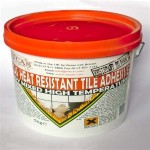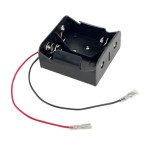Ventless Gas Fireplace Insert Safety: A Comprehensive Guide
Ventless gas fireplace inserts offer a convenient and aesthetically pleasing heating solution for many homeowners. They eliminate the need for traditional chimneys or venting systems, providing installation flexibility. However, the safety of ventless gas fireplace inserts is a crucial consideration. Understanding the technology, potential risks, and required safety measures is essential before making a purchase and operating these appliances.
The core principle of a ventless gas fireplace insert revolves around complete combustion. The appliance is designed to burn fuel, typically natural gas or propane, with maximum efficiency, minimizing the production of harmful byproducts. The combustion process ideally converts the fuel into heat, carbon dioxide (CO2), and water vapor. Because there is no external venting system, the resulting gases are released directly into the living space. Therefore, the efficiency of the combustion process and the management of these byproducts are paramount for safety.
The design and operation of ventless gas fireplace inserts are regulated by stringent safety standards and certifications. These standards, often established by organizations like the American National Standards Institute (ANSI), dictate maximum allowable levels for emissions such as carbon monoxide (CO). Manufacturers must adhere to these standards to ensure their appliances are safe for use in enclosed spaces. Regular inspection and maintenance are vital in upholding these safety measures throughout the lifespan of the unit.
Understanding Potential Risks Associated with Ventless Gas Fireplace Inserts
While designed for safety, ventless gas fireplace inserts pose potential risks if not properly installed, maintained, or operated. One primary concern is the accumulation of carbon monoxide (CO). CO is a colorless, odorless, and tasteless gas produced by incomplete combustion. Exposure to even low levels of CO can cause flu-like symptoms, while higher concentrations can lead to serious health problems, including loss of consciousness and death. The risk of CO poisoning is heightened in poorly ventilated spaces or if the appliance malfunctions.
Another risk stems from the release of water vapor into the air. Ventless gas fireplaces generate moisture as a byproduct of combustion. While a moderate amount of humidity can be beneficial, excessive moisture can foster mold growth and damage building materials. This is particularly concerning in homes with poor ventilation or pre-existing moisture problems. Monitoring humidity levels and ensuring adequate ventilation are essential to mitigate these risks.
Oxygen depletion is a further concern, although generally less significant than CO poisoning or excessive humidity. As the fireplace burns, it consumes oxygen from the room. In tightly sealed spaces, this could potentially lead to a reduction in oxygen levels, causing discomfort or, in extreme cases, more serious health issues. However, modern ventless fireplaces are designed to shut off automatically if they detect low oxygen levels, adding a layer of safety.
Finally, there is the general risk of burns from exposed surfaces, especially the glass front. While this risk is present with any fireplace, it is important to be mindful of children and pets who might come into contact with the hot surfaces. Many models offer safety screens or barriers to mitigate this risk.
Key Safety Features and Certifications
Reputable ventless gas fireplace inserts incorporate several safety features to minimize potential risks. An Oxygen Depletion Sensor (ODS) is a standard feature. This sensor continuously monitors the oxygen level in the room and automatically shuts off the gas supply if the level drops below a safe threshold. This prevents the fireplace from operating in oxygen-deficient conditions that could lead to incomplete combustion and increased CO production.
Many models also include carbon monoxide detectors built into the unit. These detectors provide an immediate warning if CO levels rise above a safe limit. However, it is crucial to have separate, battery-operated CO detectors installed throughout the home as an additional layer of protection. These should be placed in hallways and near sleeping areas to ensure early detection of any CO leaks, regardless of the fireplace's operation.
Manufacturers also subject their appliances to rigorous testing to obtain certifications from reputable organizations. The ANSI (American National Standards Institute) sets standards for the design, construction, and performance of ventless gas appliances. Products that meet these standards are certified by organizations like CSA Group or Intertek. These certifications indicate that the appliance has been independently tested and meets safety requirements.
Furthermore, look for fireplaces that have been tested and listed to UL standards. UL (Underwriters Laboratories) is another recognized testing and certification organization that provides assurance that the product has undergone rigorous testing and meets safety requirements. These certifications provide homeowners with confidence that the appliance has been designed and manufactured to minimize risks.
In addition to these safety features, the installation process itself is critical. Proper installation ensures the appliance operates correctly and safely. It is highly recommended to have a qualified professional install the ventless gas fireplace insert. A professional installer can ensure that the appliance is properly connected to the gas supply, that the gas pressure is correct, and that the appliance is properly adjusted for optimal combustion.
Safe Operation and Maintenance Practices
Even with safety features and certifications, safe operation and regular maintenance are crucial for ensuring the long-term safety of a ventless gas fireplace insert. Adhering to the manufacturer's instructions is paramount. The owner's manual provides specific guidelines for operating the appliance, cleaning it, and troubleshooting common issues. Deviating from these instructions can compromise safety and void the warranty.
Regular inspections are essential to identify potential problems before they become hazardous. Visually inspect the fireplace for any signs of damage, such as cracks, leaks, or loose connections. Check the burner for any obstructions that could impede proper combustion. Clean the burner and the surrounding area regularly to remove dust and debris. A buildup of dust can affect the efficiency of the combustion process and potentially increase CO emissions.
Carbon monoxide detectors should be tested regularly to ensure they are functioning correctly. Follow the manufacturer's instructions for testing and replacing the batteries. Ideally, CO detectors should be tested monthly and batteries replaced at least twice a year. Never disable or remove the CO detectors, as they are essential for alerting you to the presence of this dangerous gas.
Adequate ventilation is essential, even with a ventless fireplace. While they don't require a chimney, these fireplaces still rely on proper airflow for safe operation. Ensure there is sufficient fresh air circulating in the room where the fireplace is located. This can be achieved by opening a window slightly or using a ventilation fan. Avoid using the fireplace in a tightly sealed room with no ventilation.
It is also important to be mindful of the materials placed near the fireplace. Keep flammable materials, such as curtains, furniture, and paper, away from the appliance. Maintain a safe distance to prevent accidental ignition. Never use the fireplace to dry clothes or other items, as this could pose a fire hazard.
If a homeowner detects any unusual odors, soot buildup, or other signs of malfunction, the appliance should be turned off immediately, and a qualified technician should be contacted for inspection and repair. Attempting to repair the appliance without proper training can be dangerous and could void the warranty. Professional servicing ensures that the appliance is operating safely and efficiently.
Finally, be aware of the symptoms of carbon monoxide poisoning. These symptoms can include headache, dizziness, nausea, fatigue, and confusion. If anyone in the household experiences these symptoms, immediately evacuate the home and seek medical attention. Even mild symptoms should be taken seriously, as CO poisoning can be life-threatening.
:max_bytes(150000):strip_icc()/ventless-gas-fireplaces-4160746-hero-f9d4bdcd9bd446eb84406de306f790ba.jpg?strip=all)
How To Pick Out A Ventless Gas Fireplace

Are Vent Free Gas Fireplaces Safe Ventless
.aspx?strip=all)
Ventless Fireplaces Explained Safety Of Vent Free Fires

Are Vent Free Gas Fireplaces Safe Ventless

Considering A Ventless Gas Fireplace Here S What You Need To Know Bob Vila

Considering A Ventless Gas Fireplace Here S What You Need To Know Bob Vila

Are Ventless Gas Fireplaces Safe Smokeyembers Com

ᑕ❶ᑐ Ventless Gas Fireplace Insert Disadvantages Of Use

A Ventless Gas Fireplace Doesn T Belong In Your Home Greenbuildingadvisor

Ventless Gas Fireplace Propane








